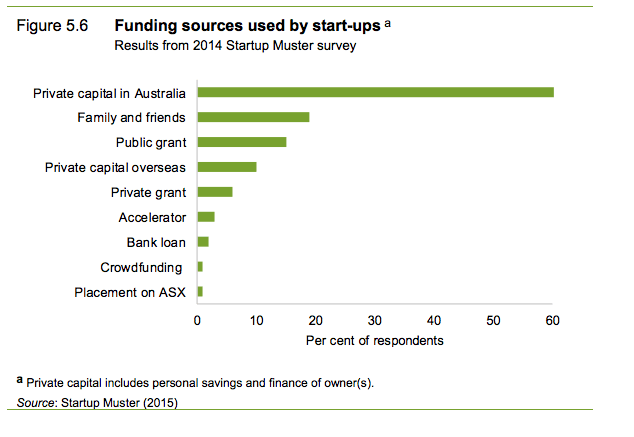Why fintech is different in the SME space

Has fintech disrupted the small-to-medium enterprise market, or just brought it back to where it should be?
Fintech is synonymous with disruption, but in the Australian small business lending market, new market entrants don’t have much to disrupt. Lack of financing, difficulty managing cash flow and forced long payment terms from big business suppliers are high on the list of SME pain points, so how have fintech companies alleviated these while still driving innovation?
The outdated SME finance model
Both the fintech and small business markets were changed by the Global Financial Crisis (GFC), but in different ways. Fintech surged in the wake of the GFC, while many small businesses struggled in its wake.
Prior to 2008, SMEs turned mostly to banks for debt finance. However, according to Neil Slonim from not-for-profit SME finance resource theBankDoctor, this SME-bank relationship model is no longer viable.
“One of the shortcomings of the existing SME banking relationship model is its reliance on real estate security, but demographics, business models and attitudes have changed," Slonim said. "Housing unaffordability is causing the demise of the Great Australian Dream and those new age business owners who do have property with some level of equity are less inclined to put it at risk based on the view that their business should stack up on its own.”
When fintech lenders came into the SME space they were entering a market with a strong demand for finance and a dearth of innovation. Online SME lenders such as PayPal, OnDeck, Prospa and Moula entered the space and offered new solutions.
Business owners could apply by connecting their online accounting software to the lender and without needing a formal business plan; loan terms as little as three months were introduced and eligibility criteria was flexible, including no need for real estate security.

Niche lenders for niche problems
Fintech firms are relying on data and algorithms to approve loans and can do so faster than traditional banks. The shorter repayment terms and smaller loan amounts have also found favour with business borrowers despite some of the fees being higher.
A new niche, peer-to-peer (P2P) business finance, has emerged that focuses more heavily on risk-based pricing for businesses. Established P2P lenders such as RateSetter have entered the space as well as new lenders, such as Bigstone.
As well as dealing with lack of time, human resource management and compliance issues, Slonim identified cash flow as one of the biggest problems for SMEs, and he says it’s not getting any easier.
“Juggling competing interests to stay cash positive is a constant battle,” he said. “Big companies are also increasingly using SMEs to fund their own working capital needs. For instance, only last week Kellogg’s and Fonterra both announced they were extending their payment terms from 90 to 120 days. Fonterra justified this decision on the basis that it was adhering to “international best practice”. It seems the multinationals are screwing the little guys all over the world.”
Australia’s “long payment culture”, or the delay in the payment of business invoices, is the worst in the world. On average, Australia pays invoices 26.4 days overdue, with Mexico coming just ahead of us with an average of 18.6 days overdue.
The government may step in by introducing a prompt payment protocol, but fintech companies have also offered solutions. Invoice financing companies such as Skippr and Waddle offer a way for companies to bring invoices forward in exchange for a fee. Banks have previously offered this service, but fintech companies are also offering integration with accounting software and more transparent fee structures. Larger banks have increasingly been moving out of this space or offering an invoice financing product through a third-party.
“Better the devil you know”
Alternatives to the banks are there for business borrowers, but according to Slonim, one of the barriers for business owners is the lack of awareness of their options.
“SMEs do have lots of financing options outside the Big Four banks, but they just don't know what they all are and even if they did, they would struggle to determine which one was best suited to them. As a result many just default to the status quo of 'better the devil you know'. If the bank won’t help, they borrow from family, friends or on the credit card, or they somehow just find a way to get by.”
The numbers support Slonim. According to a report released by The Productivity Commission in September 2015, bank loans were one of the last places startups turned for finance. The report drew on results from a 2014 survey by Startup Muster, which showed private capital from Australia was the most popular funding source for startup businesses, followed by funds from family and friends and public grants. Bank loans were third least popular with only 2% of startups relying on bank finance.

Source: Productivity Commission Inquiry Report
The strict criteria banks set for business lending leaves many ineligible. The Commission’s report, called Business Setup, Transfer and Closure, also found that out of the businesses that did apply for finance in 2014, 9% were not approved while an additional 9% did not receive sufficient funding. This is compared to 10% of businesses in 2011 that weren’t approved for finance and 5% in 2007.
Fintech vs banks?
Without much to disrupt, does the “fintech vs bank” discourse have a place in the SME space?
“I don't see it in terms of lenders versus banks. I see fintech lenders filling a gap in the market for those SMEs that the banks are not able or willing to service,” says Slonim.
“Banks will always be cheaper but there is certainly a role for fintech lenders although this new breed of lender is by no means the panacea for all of the SME sector’s funding woes.”
There have been several partnerships between SME fintech companies and banks, with the banks involved citing they are able to service a market which they cannot. This includes Commonwealth Bank and OnDeck, recipients of the Fintech-Bank Collaboration of the Year award at the Fintech Awards 2016, and Westpac and Prospa.
As the space develops and new innovations emerge, whether through partnerships or standalone lenders, it should always come back to the needs of the small business.
“Whilst it is still early days with fintech lenders, there is an urgent need for more regulation and pricing transparency to safeguard the interests of small business borrowers. Building integrity and trust is critically important in this emerging form of SME finance.”
Follow @NeilSlonim or sign-up to theBankDoctor newsletter.


